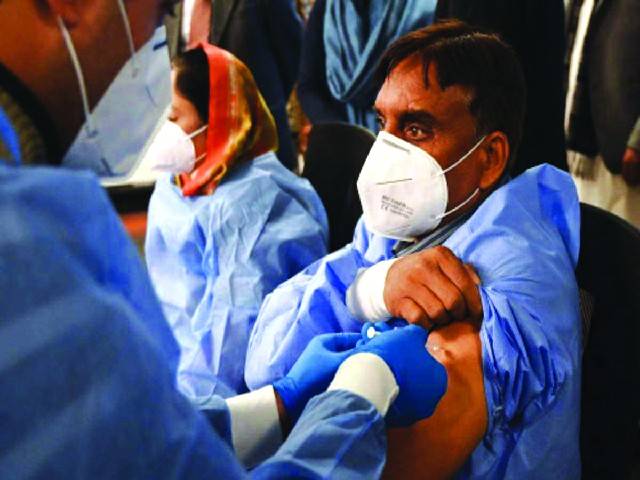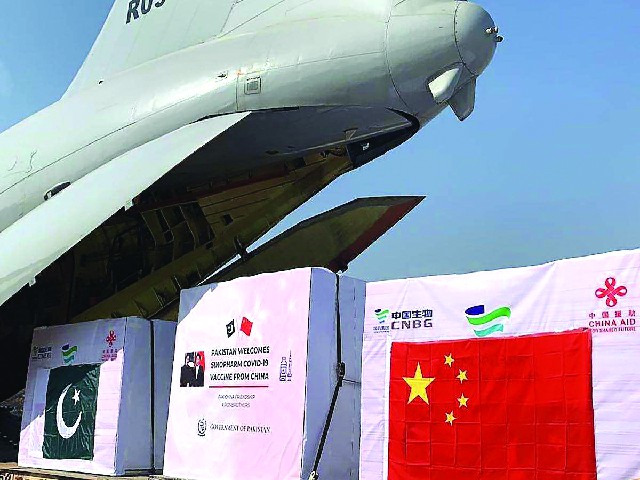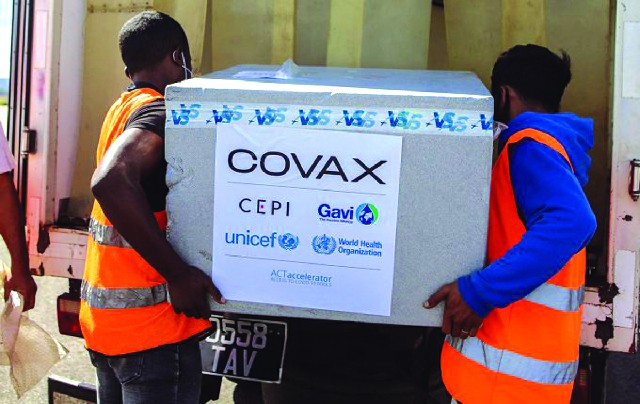
When will this pandemic end?”
We are accustomed to this question for the last many months. But still there is no answer. While there are chances that COVID-19 will become a mild infection at some point, a future entirely free of the novel Coronavirus is not on the near horizon according to scientists studying infectious diseases at Vanderbilt University Medical Center.
In fact, there are very few examples in history when an infectious disease was successfully eradicated – like smallpox. For complete eradication, we require sterilizing immunity which means that vaccinated people cannot get infected or spread the disease.
The current vaccines against COVID-19 do not produce sterilizing immunity. It means that people can still get mild infections, but these vaccines can protect them from serious complications or hospitalization.

The main goal of this vaccination campaign is to achieve herd immunity to prevent the spread of the virus. The factors which can influence the achievement of herd immunity include availability of the vaccine as well as the emergence of virus variants that are resistant to these vaccines. We are observing different variants of COVID-19, but we are not sure yet if these variants can bypass vaccine-induced immunity.
There are many other factors that will affect the journey ahead, and these are entirely human ones. This would include the role of governments, global health organizations and the behaviour of citizens in every society.
Depending upon these factors, there are many possible outcomes. An optimistic scenario is the one in which COVID-19 vaccines are effective against all current and future variants of this coronavirus and these vaccines are distributed equally in every country in a well-coordinated effort. This optimistic scenario will need international cooperation and ample funding – yet even with those, it would still take a long time to achieve.

Alternatively, there is a pessimistic scenario, in which variants of the novel coronavirus emerge with the ability to escape vaccine immunity. In response to this situation, only high-income countries will develop modified vaccines for their populations, while the poor countries will struggle with repeated waves and vaccines which are unable to control new viral variants. This will ultimately lead to repeated outbreaks even in high-income countries – because, quite simply, no country will be safe until all countries are safe.
There are many other intermediate scenarios between these two extremes, depending upon some other factors like vaccine hesitancy, skepticism, myths, misinformation and disinformation in society. Due to these factors, the route to normality will be a much longer one.
Making reliable predictions or projections is complicated because we do not have information about the duration of immune protection with current vaccines and their efficacy against new variants of the coronavirus. Moreover, the precise need and/or time for a booster dose of these vaccines is still unknown.

Various models suggest that a winter surge of COVID-19 infection may occur but due to rising vaccination rates, hospitalization and death rates are expected to be on the lower side as compared to the last winter. The scale of the winter surge will also depend on behaviour among citizens, especially when it comes to mask-wearing and social distancing. It might be difficult to maintain social distancing next winter due to general public fatigue and the economic effects of the pandemic.
In order to handle the future consequences of this COVID-19 pandemic, advance planning and a range of strategies will have to be designed. First of all, we need an intensified global vaccination campaign where every country receives vaccines according to its population. Secondly, a vigilant surveillance is required for emerging variants and modification of vaccines to enhance their efficacy.
Moreover, it will be important to manage the intensive care units (ICUs) at hospitals in a possible winter surge. It can be achieved by reducing transmission in peak months through social distancing, mandatory vaccination, mask-wearing and avoiding large meetings in peak months.
It will be very important to change the lifestyle of people at risk. People above 65 years of age and with various health conditions must wear masks even if they have received vaccines. Moreover, they should avoid indoor dining, concerts, sports events or any large gathering in which the transmission risk is high.
The prospect of persistent and seasonal COVID-19 is real. And the world needs to learn more in the coming months about vaccine immunity, viral variants and new-generation vaccines.
Moreover, the time between waves is important to improve our healthcare systems and make cultural adjustments to protect the life of high-risk individuals. Every country Has to prepare by improving its virus surveillance system, medical and public health responses, and by launching new socio-economic programs to blunt the damage inflicted by the pandemic.
Dr. Muhammad Nauman Zahid is Assistant Professor of Virology at the Department of Biology, College of Science, at the University of Bahrain. He may be reached at nzahid@uob.edu.bh
We are accustomed to this question for the last many months. But still there is no answer. While there are chances that COVID-19 will become a mild infection at some point, a future entirely free of the novel Coronavirus is not on the near horizon according to scientists studying infectious diseases at Vanderbilt University Medical Center.
In fact, there are very few examples in history when an infectious disease was successfully eradicated – like smallpox. For complete eradication, we require sterilizing immunity which means that vaccinated people cannot get infected or spread the disease.
The current vaccines against COVID-19 do not produce sterilizing immunity. It means that people can still get mild infections, but these vaccines can protect them from serious complications or hospitalization.

The main goal of this vaccination campaign is to achieve herd immunity to prevent the spread of the virus. The factors which can influence the achievement of herd immunity include availability of the vaccine as well as the emergence of virus variants that are resistant to these vaccines. We are observing different variants of COVID-19, but we are not sure yet if these variants can bypass vaccine-induced immunity.
In a pessimistic scenario, poor countries will struggle with repeated waves and vaccines which are unable to control new viral variants. This will ultimately lead to repeated outbreaks even in high-income countries – because, quite simply, no country will be safe until all countries are safe
There are many other factors that will affect the journey ahead, and these are entirely human ones. This would include the role of governments, global health organizations and the behaviour of citizens in every society.
Depending upon these factors, there are many possible outcomes. An optimistic scenario is the one in which COVID-19 vaccines are effective against all current and future variants of this coronavirus and these vaccines are distributed equally in every country in a well-coordinated effort. This optimistic scenario will need international cooperation and ample funding – yet even with those, it would still take a long time to achieve.

Alternatively, there is a pessimistic scenario, in which variants of the novel coronavirus emerge with the ability to escape vaccine immunity. In response to this situation, only high-income countries will develop modified vaccines for their populations, while the poor countries will struggle with repeated waves and vaccines which are unable to control new viral variants. This will ultimately lead to repeated outbreaks even in high-income countries – because, quite simply, no country will be safe until all countries are safe.
There are many other intermediate scenarios between these two extremes, depending upon some other factors like vaccine hesitancy, skepticism, myths, misinformation and disinformation in society. Due to these factors, the route to normality will be a much longer one.
Making reliable predictions or projections is complicated because we do not have information about the duration of immune protection with current vaccines and their efficacy against new variants of the coronavirus. Moreover, the precise need and/or time for a booster dose of these vaccines is still unknown.

Various models suggest that a winter surge of COVID-19 infection may occur but due to rising vaccination rates, hospitalization and death rates are expected to be on the lower side as compared to the last winter. The scale of the winter surge will also depend on behaviour among citizens, especially when it comes to mask-wearing and social distancing. It might be difficult to maintain social distancing next winter due to general public fatigue and the economic effects of the pandemic.
In order to handle the future consequences of this COVID-19 pandemic, advance planning and a range of strategies will have to be designed. First of all, we need an intensified global vaccination campaign where every country receives vaccines according to its population. Secondly, a vigilant surveillance is required for emerging variants and modification of vaccines to enhance their efficacy.
Moreover, it will be important to manage the intensive care units (ICUs) at hospitals in a possible winter surge. It can be achieved by reducing transmission in peak months through social distancing, mandatory vaccination, mask-wearing and avoiding large meetings in peak months.
It will be very important to change the lifestyle of people at risk. People above 65 years of age and with various health conditions must wear masks even if they have received vaccines. Moreover, they should avoid indoor dining, concerts, sports events or any large gathering in which the transmission risk is high.
The prospect of persistent and seasonal COVID-19 is real. And the world needs to learn more in the coming months about vaccine immunity, viral variants and new-generation vaccines.
Moreover, the time between waves is important to improve our healthcare systems and make cultural adjustments to protect the life of high-risk individuals. Every country Has to prepare by improving its virus surveillance system, medical and public health responses, and by launching new socio-economic programs to blunt the damage inflicted by the pandemic.
Dr. Muhammad Nauman Zahid is Assistant Professor of Virology at the Department of Biology, College of Science, at the University of Bahrain. He may be reached at nzahid@uob.edu.bh

